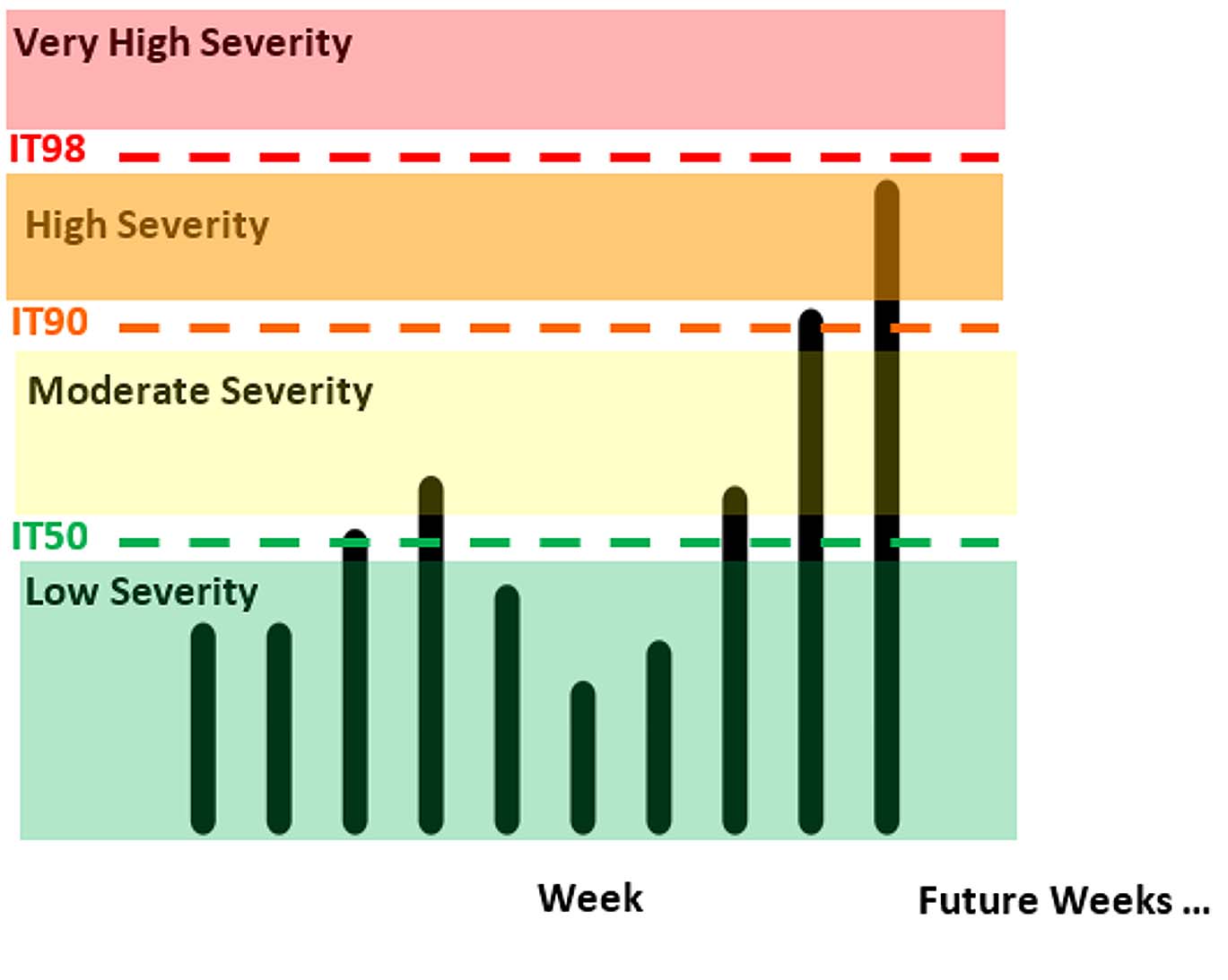2023-2024 United States Flu Season: Preliminary In-Season Severity Assessment
The classification provided below is the last update of the preliminary in-season severity assessment for the 2023-2024 season unless there is a shift in activity during the summer time. Reporting of preliminary in-season severity assessment for the 2024-2025 season will begin again in fall 2024.
Using the highest weekly values observed from October 1, 2023, through June 15, 2024, CDC assesses this season’s severity as:
CDC classifies severity to understand the impact of flu virus activity throughout the season on the population and health care system. These data can help guide public health actions, such as targeting prevention and treatment messages to appropriate audiences and make recommendations designed to prevent flu illnesses and death. Additional information on How CDC Classifies Flu Severity is available.
Additionally, CDC estimates the 2023-2024 in-season disease burden of flu available at Preliminary In-Season Burden Estimates.
Three flu surveillance indicators (influenza-like illness (ILI) outpatient visits, flu-related hospitalizations, and flu deaths) are used to assess the severity of a flu season each week. The preliminary severity for a season is classified by assessing these indicators across all age groups at the highest week of activity for each indicator during the season. The highest values are compared to historic flu seasons and classified as being low, moderate, high, or very high severity based on which intensity threshold the highest week value observed to date crosses. The highest week assessment can change as the season progresses, depending on activity levels of the flu indicators.
Data Sources
U.S. Outpatient Influenza-like Illness Surveillance Network (ILINet): Percent of outpatient visits for flu-like illness out of all outpatient visits by week. ILINet sites that collect age-specific data on the number of influenza-like illness visits and total number of outpatient visits are used for the severity assessment.
Influenza Hospitalization Surveillance Network (FluSurv-NET): Adjusted rate of flu-related hospitalizations per 100,000 people by week. Hospitalization rates are adjusted using data from past seasons on testing practices and the sensitivity of diagnostic tests.
National Center for Health Statistics (NCHS) Mortality Surveillance Data: Percent of flu-coded deaths out of all reported deaths by week.
The data used to assess severity are available for download through the weekly FluView report.
How researchers classify severity each week during the season
Each week, CDC assesses the flu severity in the United States using the three indicators across all age groups (percent of ILI, flu-related hospitalization rate, and percent of flu deaths) and compares the weekly values to intensity thresholds for each indicator calculated from past seasons. Each indicator is assessed separately. If the weekly indicator value falls below all thresholds, the week is classified as low severity. If the weekly indicator value is equal to or above the IT50 and below the IT90, the classification would be moderate. If the weekly indicator value is equal to or above the IT90 and below the IT98, the classification would be high. If the weekly indicator value is above the IT98, the classification would be very high. This process is repeated for the next indicator. For each week, the overall weekly assessment of severity is classified based on all three indicators combined. If two or three indicators have the same assessment, then the overall classification is matched to those indicators. If all three of the indicators have different classifications, then the classification in the middle is used for the overall classification. Weekly severity assessments may change because indicator data may not be complete at the time of assessment because of reporting delays and backfill of information. To assign a preliminary severity classification during the season, the highest week values observed to date for each indicator are assessed. The preliminary in-season severity classification as the season progresses, depending on the activity levels of each indicator.
More information about how and why CDC classifies flu severity is available.
Limitations
- In-season severity assessments are preliminary because the season is ongoing and influenza viruses continue to circulate. As the season progresses, severity will continue to be assessed and the classification may change.
- The data used to assess severity are updated weekly because initial data submissions may be incomplete because of reporting delays and backfill of information. Severity assessments for earlier weeks may change as additional data become available.

The above graphic provides an example of how severity is classified each week. The figure shows a bar graph with the black lines representing a flu indicator at different levels across time, intensity thresholds, and shading to represent the different severity classifications. Each black bar represents a week in time as additional black bars will be added as time continues and those future weeks will be classified. The dashed lines represent the different threshold values. If a black bar falls below the green dashed line (IT50), the indicator would be classified as having low severity (black bar is only in the green shaded area). If a black bar is between the green dashed line (IT50) and the orange dashed line (IT90), the indicator would be classified as having moderate severity (black bar crosses into the yellow shaded area). If a black bar is between the orange dashed line (IT90) and the red dashed line (IT98), the indicator would be classified as having high severity (black bar crosses into the orange shaded area). If a black bar is above the red dashed line (IT98), the indicator would be classified as having very high severity (black bar crosses into in the red shaded area).
